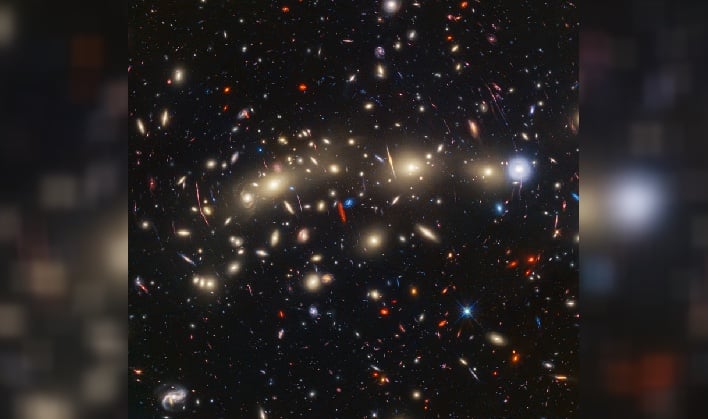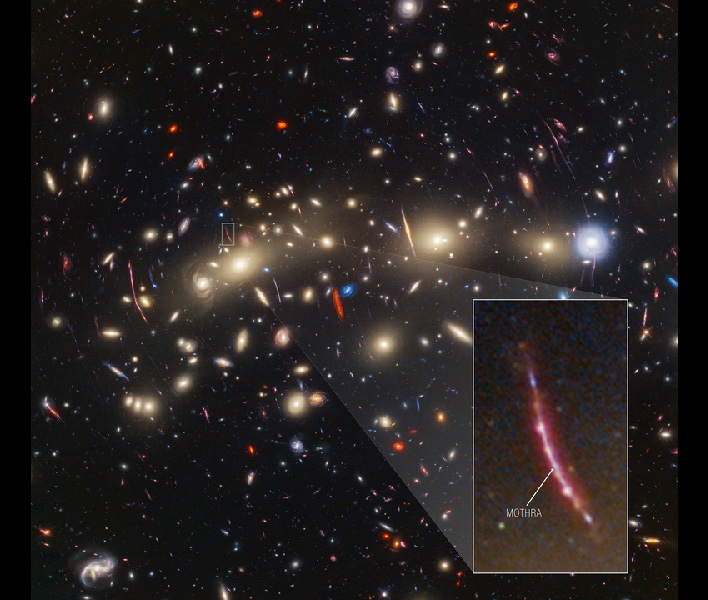NASA Gets Into The Holiday Spirit With A Stunning Image Of A Cosmic Christmas Tree

MACS0146 is located about 4.13 billion light-years from Earth, and is a pair of colliding galaxy clusters that will eventually merge into one massive cluster. The combined images took advantage of a technique known as gravitational lensing, which is the distortion and amplication of light from distant background sources. Hubble first captured images of the cluster in 2014 as part of the Frontier Fields project. Now, Webb's infrared ability gives researchers the ability to gaze even farther into the early universe.
"We are building on Hubble's legacy by pushing to greater distances and fainter objects," explained Rogier Windhhorst of Arizona State University and principal investigator of the PEARLS (Prime Extragalactic Areas for Reionization and Lensing Science) program.

The image of galaxy cluster MACS0146 highlights one particular gravitationally-lensed background galaxy, believed to have existed about 3 billion years after the big bang. The team nicknamed it "Mothra." In the image, Mothra is magnified by a factor of at least 4,000 times. The team believes it is magnified not only by the gravity of MACS0146, but also by an object known as "milli-lens" that likely weighs about as much as a globular star cluster, according to NASA.
The team dubbed the cluster the Christmas Tree Galaxy Cluster, in part because the image is so colorful and also because of flickering lights found within it. Those colors have a scientific purpose, however. The shortest wavelengths were color-coded blue, the longest wavelengths red, and intermediate wavelengths green. Each color gives researchers clues to galaxy distances. Blue galaxies are relatively nearby, while redder galaxies tend to be farther away and those detected by Webb.
"The whole picture doesn't become clear until you combine Webb data with Hubble data," remarked Windhorst.

